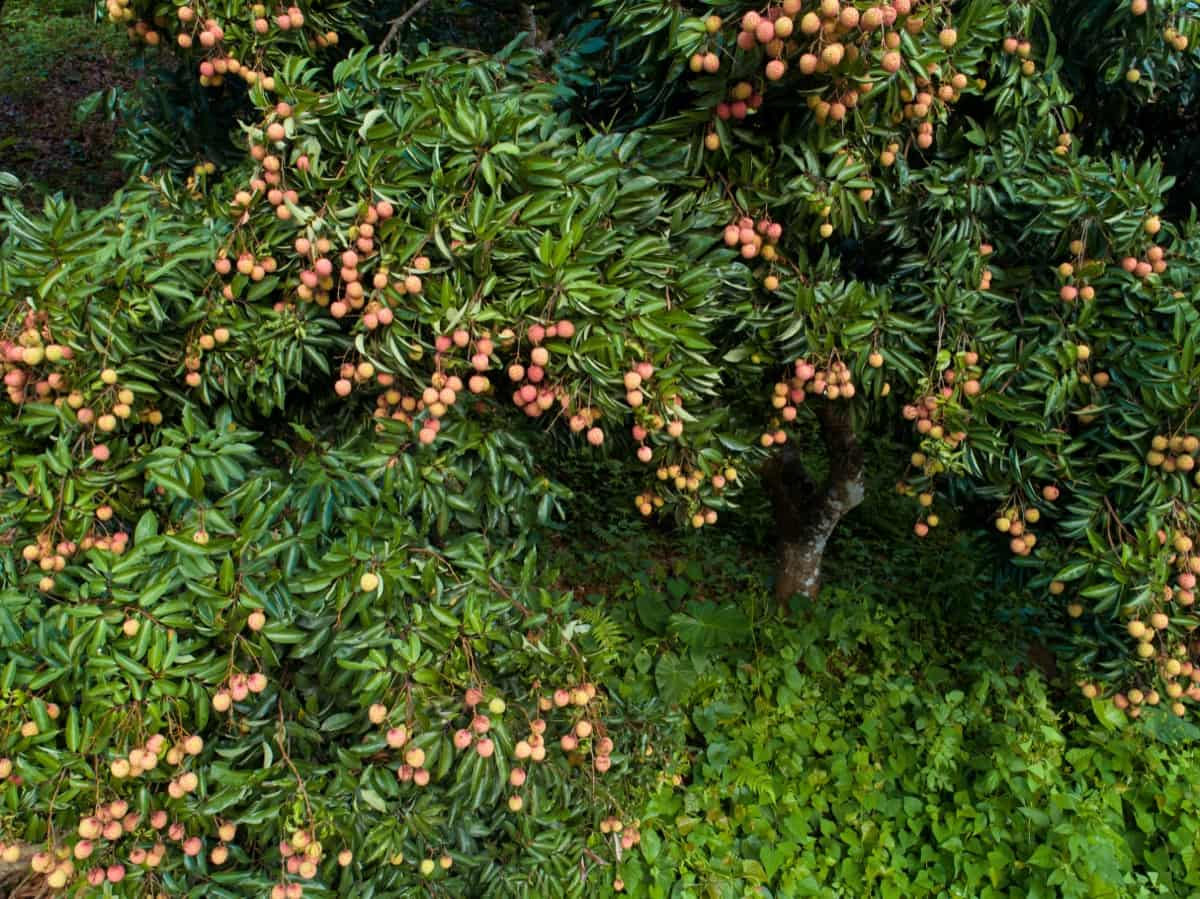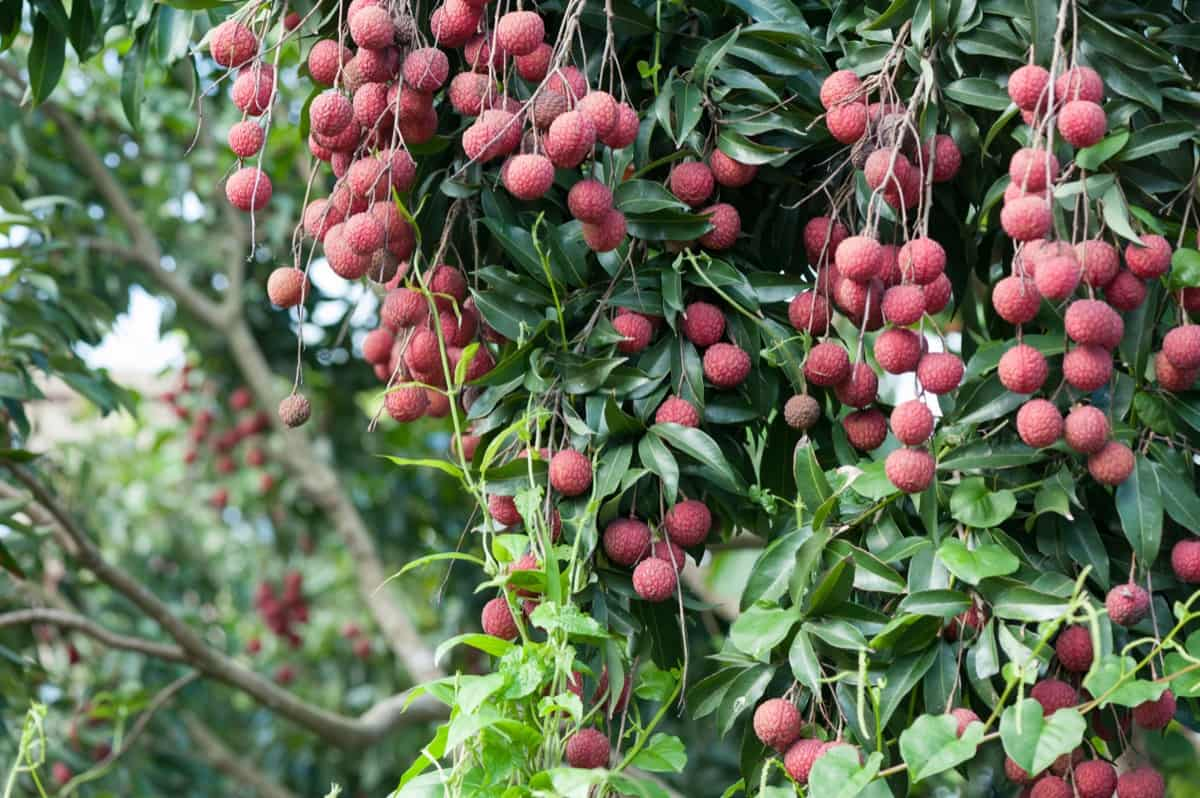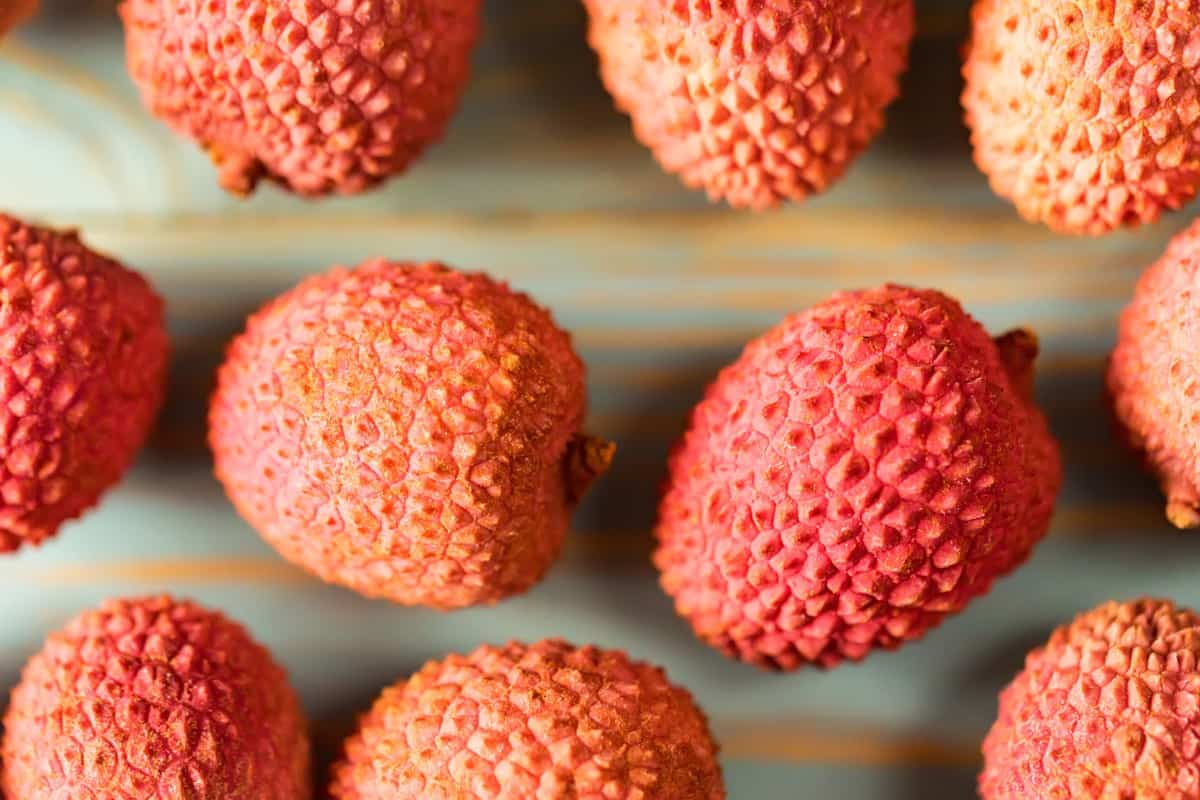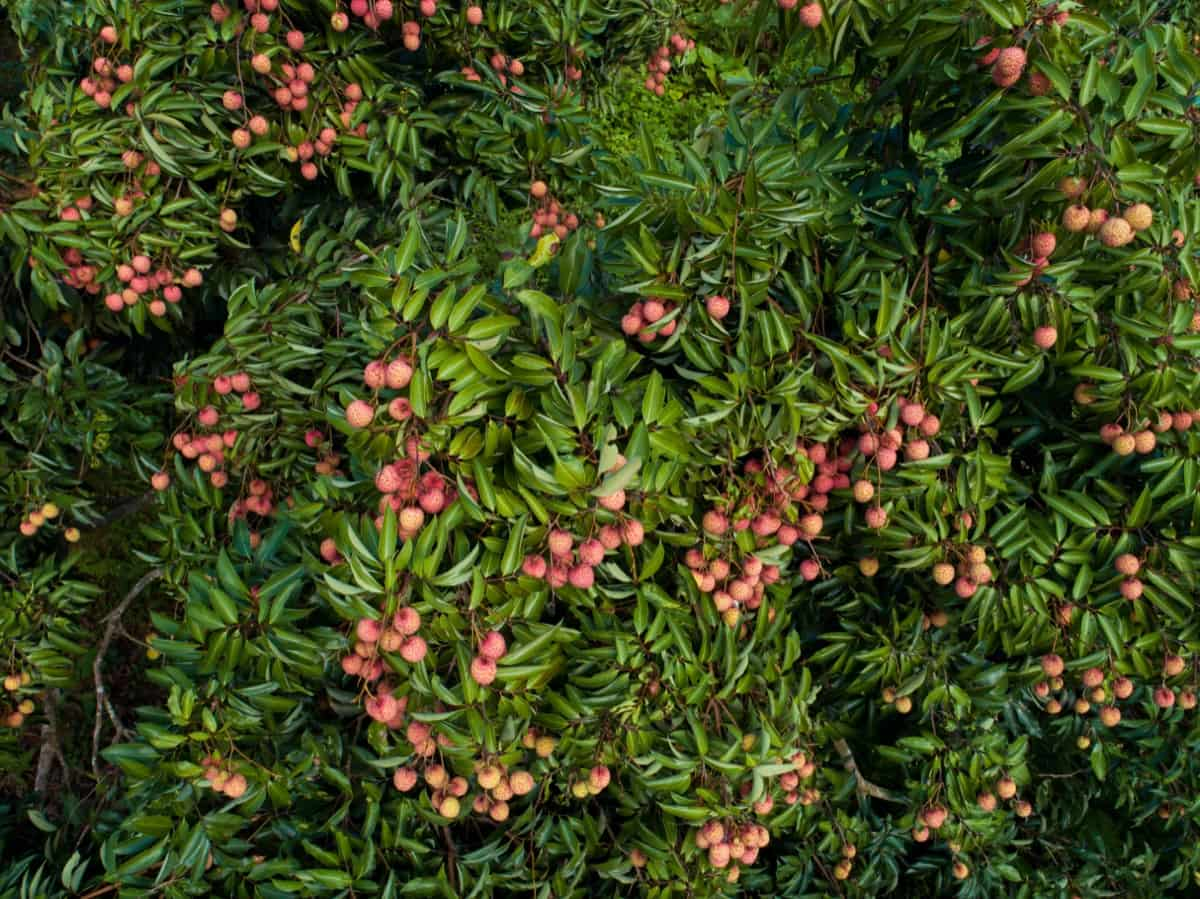Welcome to our blog post on optimizing litchi orchards! If you’re a litchi farmer or enthusiast looking to boost your yield and enhance the quality of your litchi harvest, you’ve come to the right place. Litchi, known as the ‘Queen of Fruits,’ is visually appealing and packed with nutraceutical and medicinal properties.

With a rising demand in domestic and global markets, it has become a lucrative enterprise. In this blog, we will delve into key nutrient management approaches that can help you maximize your litchi yield and ensure top-notch fruit quality. Get ready to unlock the secrets to thriving litchi orchards!
Key Nutrient Management of Litchi
What is Litchi Farming and its Overview?
Litchi, often called the ‘Queen of Fruits,’ is renowned for its vibrant pericarp color, enticing taste, and delightful aroma. It holds immense value as a source of nutraceutical, therapeutic, and medicinal properties, making it highly sought after in both domestic and global markets. Commercial cultivation of Litchi primarily takes place in states like Bihar, Jharkhand, Uttar Pradesh, Uttarakhand, West Bengal, Punjab, Haryana, and the Union Territory of Jammu & Kashmir.
Over the past decade, the litchi industry has witnessed remarkable growth, with a substantial increase in cultivated area from 74,400 hectares in 2009-10 to 95,000 hectares in 2018-19 (per the third advance estimate by NHB). Fruit production has also seen a significant boost of 47.1%, while fruit productivity has increased by 17.8% nationwide.
The sub-mountainous regions of Punjab, Haryana, Himachal Pradesh, Jammu, and Kashmir offer ideal soil and agro-climatic conditions for litchi cultivation, contributing to the rapid expansion of the litchi fruit industry in these areas. Moreover, state-sponsored projects like the ‘Litchi Niche’ area in the Jammu region and the Litchi Estate in Punjab have further propelled litchi cultivation in northern regions of India.
Integrated Nutrient Management in Litchi Orchards
Litchi (Litchi chinensis Sonn.) is a highly valued sub-tropical fruit known for its exceptional quality, juicy flesh, delightful flavor, and vibrant color. In India, litchi production ranks second globally, with major cultivation areas in Bihar, West Bengal, Jharkhand, and other states. However, challenges such as sensitivity to soil and climatic conditions, short postharvest life, and nutrient deficiencies affect yield and fruit quality.
In case you missed it: A Step-By-Step Guide to High Density Fruit Farming: For Guava, Banana, Mango, Pineapple, Lemon, Papaya, Litchi, and Apple

- Nutrient Management for Litchi Orchards The included differences in nitrogen (N), phosphorus (P), potassium (K), farmyard manure (FYM), vermicompost, and biofertilizers like Azotobacter, phosphorus-solubilizing microbes (PSM), and vesicular-arbuscular mycorrhiza (VAM).
- Litchi cultivation faces challenges due to its sensitivity to nutrient availability, soil health, and environmental conditions. Chemical fertilizers alone can negatively impact fruit quality and soil and water. Therefore, an integrated approach involving organic manures, biofertilizers, and chemical fertilizers is crucial. Integrated Nutrient Management (INM) helps maintain soil fertility, improve plant nutrition, suppress pests and diseases, and safeguard the environment. By adopting INM practices, litchi growers can achieve safer and more sustainable production, meeting international standards and enhancing market competitiveness.
- Treatment for Litchi with 500 g N+250 g P+250 g K+100 kg FYM+150 g Azotobacter+100 g PSM+100 g VAM showed the most promising results.
- Trees subjected to the given treatment yielded 1280 fruits per tree, with a fruit yield of 30.01 kg/tree.
- Fruits exhibited high sugar content, both in total (26.14%) and reducing (14.51%).
- Chemical fertilizers alone can adversely affect fruit quality and the environment.
- Integrated use of organic manures, biofertilizers, and chemical fertilizers ensures safer food production.
- INM practices help sustain soil fertility, improve plant nutrition, and suppress pests and diseases.
- Adoption of INM can enhance the quality and market competitiveness of litchi produce.
Ideal Nutrient Management for Litchi Orchards to Enhanced Yield and Quality
Nursery Production and Nutrient Management in Litchi Orchards
Litchi plants can be successfully propagated through the air layering technique, also known as Gootee. In North India, air layering is typically performed from mid-July to September. To prepare the air layers, select terminal growth from the previous season, which should be about 45-60 cm long and 1.0-1.25 cm thick.
Remove a bark ring with a thickness of 4 cm from the middle of the selected shoots using a sharp knife. This prevents the downward flow of carbohydrates and photosynthates. The wood portion (xylem) should remain undisturbed to ensure an uninterrupted flow of water and mineral nutrients to the upper leaves. Choosing shoots that are not directly exposed to the sun is advisable. Shoots facing the northeastern and northwestern aspects of the tree canopy tend to produce more roots on the girdled portion.
Place sphagnum moss grass around the cut portion to promote root growth, and wrap it with a polythene strip. Tie the ends tightly to prevent drying. After a few weeks, roots will start emerging from the growing points formed by the cambium, which will be visible through the polythene sheet. Once many roots have developed, cut the Gootee from the mother tree just below the rooted portion. Dip the rooted portion in water and keep it in the shade. Prepare nursery beds under partial shade.
Gently remove excessive leaves and polythene covering around the rooted portion. Transplant the Gootee into pre-prepared holes slightly larger than the rooted portion. Fill the space around the Gootee with fine soil and press gently to avoid injury to the roots. Keep these rooted layers in the nursery for at least two years before transplanting them into the field to allow for sufficient root system development.
In case you missed it: Top 15 Steps to Boost Litchi/Lychee Yield: How to Increase Fruit Size, Quality, and Production

Soil Preparation and Nutrition Management
When preparing the soil in the pit for litchi plantation, mixing it with soil collected from the root zone of existing litchi orchards is recommended. This soil contains Mycorrhizae fungus, which aids nutrient uptake and root development. Integrated nutrient management is essential for proper vegetative growth and fruit yield. It is important to find the nutrient status of the soil and plants. During February-March, collect leaf samples from the mid-portion of 4-5 months old leaves of the autumn flush.
These samples should be collected from the second and third pairs of leaflets, starting from the terminal apex downwards. To prevent nutrient deficiency, fertilizer application should be based on soil and leaf analysis. Follow the recommended fertilizer schedule, starting with the plantation of Litchi in the orchard. Apply the entire dose of farmyard manure (FYM), single superphosphate, and muriate of potash in December. Divide the urea dose into two equal splits, applying half in the middle of February and the other half in mid-April after fruit.
Best Optimizing Litchi Orchards Conditions to Enhanced Yield and Quality
Canopy Management
- Rejuvenating old orchards is done in August-September by pruning the trees.
- Bordeaux mixture is applied to cut end portions to prevent fungal diseases.
- New shoots are spaced out, and only 4-5 branches are kept on each pruned limb.
- The application of recommended doses of fertilizers and light irrigation follows pruning.
- Commercial bearing starts 3-4 years after pruning.
Intercropping
- Tall and exhaustive crops should be avoided as intercrops in litchi orchards.
- Legume field crops are recommended as intercrops to fix atmospheric nitrogen.
- Filler crops like plum, peach, kinnow, and guava can be planted temporarily, but they should be removed when they start interfering with the main crop.
Fruit Bagging
Litchi fruit bunches can be covered with non-woven polypropylene bags to enhance fruit quality and reduce fruit cracking and pests.
Irrigation
- Pre-bearing stage orchards are irrigated weekly/fortnightly.
- Excessive irrigation should be avoided as it can damage the roots and cause decline and drying of trees.
- Regular irrigation should be initiated in bearing orchards after the fruit set stage.
- Critical fruit development stages require irrigation twice a week.
Harvesting and Storage
- Litchi fruits are harvested based on visual appearance and eating quality.
- Harvested fruits should be stored at low temperatures (2-3°C) with high humidity (90-95%) to enhance shelf life.
- Fruits can be stored for 1-2 weeks, depending on maturity.
Marketing
- Short harvesting window and poor shelf life create market challenges.
- Self-marketing or forming cooperative groups can help improve income and reduce price disparity.
- Postharvest facilities like pack houses and storage infrastructure are recommended.
Plant Protection
- Litchi fruit nut borer is a major insect pest that causes economic losses.
- Pruning, orchard floor management, and regular plowing are recommended to control pests.
- Spraying insecticides and fungicides at appropriate stages can help control pests and diseases.
Deficiency Nutrient Management Strategies to Enhance Litchi Production
Nitrogen (N): Nitrogen deficiency causes yellowing of older lower leaves, resulting in a light green appearance in the entire foliage. Severe deficiency leads to pale-yellow chlorosis starting from the leaf tip, which progresses to the whole leaf. N deficiency affects branching, fruit yield, leaflet size, panicle emergence, and root growth. It is common in soils with low organic carbon content, light-textured soils, intensive cropping systems, and waterlogged conditions.
Phosphorus (P): Phosphorus deficiency stunts vegetative growth, reduces leaflet size, and lowers fruit production. Older leaves exhibit a dark to light green coloration that can change to reddish-brown or purple. Leaf necrosis, curling, and premature leaf drop may also occur. P deficiency is common in regions with low soil organic carbon content, soils exhausted by intensive or intercropping, acidic soils, and soils where the topmost layer has been removed.
In case you missed it: Doubling Yield and Income of Mustard-based Cropping System

Potassium (K): K deficiency reduces the internodal length and unhealthy dark green leaf growth. It is a mobile nutrient, translocating from older to younger leaves. Symptoms include pale-yellow chlorosis on leaf tips and necrosis of leaf margins. K deficiency affects fruit set, fruit size, pericarp color, and pulp/stone ratio. It is common in soils with light texture, low organic content, high Na, Mg, and Ca concentrations, high bicarbonate content in irrigation water, and acidic soils with pH < 6.0.
Calcium (Ca): Ca deficiency results in small branches and drastically reduced yield. Deficiency symptoms first appear on younger leaves, which are usually malformed. Necrotic patches develop in the interveinal tissues, progressing toward the leaf margin. Ca deficiency occurs in sodic soils with high exchangeable sodium percentages, low calcium content, and highly leached acidic sandy soils.
Magnesium (Mg): Mg deficiency causes pale green leaves, pale yellow interveinal chlorosis, low branching, necrotic leaf margins, and leaf dropping. Plants affected by Mg deficiency exhibit poor growth and a dull appearance. It is common in soils with high Ca or K content, acidic soils with low cation exchange capacity, and leached soils due to heavy rainfall.
Zinc (Zn): Zn deficiency results in stunted vegetative growth, pale and smaller leaflets, bronzing, smaller fruits with lower pulp/stone ratio, and sugar content. Symptoms include irregular interveinal chlorosis on fully mature newly emerged leaves, where veins remain green. Zn deficiency intensifies with the higher application of nitrogen fertilizers and is common in soils with pH > 7.5, leached sandy soils, and soils with excessive phosphatic fertilizer application.
Iron (Fe): Fe deficiency causes chlorosis of young leaves, spreading to older leaves and dieback of branches under severe conditions. It appears in soils with low organic matter, high pH, calcareous soils with high bicarbonate content, and soils with excessive phosphatic fertilizer application.
Boron (B): B deficiency leads to short leaves, wilting, necrotic symptoms, reduced pollen viability, poor fruit set, and cracking. It occurs in light-textured leached soils, calcareous soils, and soils excessively fertilized with potassic fertilizers.
Copper (Cu): Cu deficiency appears on older leaves, resulting in short leaves with interveinal pale greenish to pale yellow. Branch dieback and downward bending of leaf margins may occur. Cu deficiency is common in alkaline and calcareous soils, leached acidic soils, and soils with higher organic matter content.
Manganese (Mn): Mn deficiency causes pale-yellowish interveinal chlorosis in the middle portion of older leaves, progressing towards the tip and leaf base. The upper leaf surface may develop a purplish luster. Mn deficiency is less common but may occur in light-textured soils.
Nutrient Management Through Fertilizer Applications in Litchi Orchards
- The timing of fertilizer application depends on the age of the trees. The initial phase of establishing the orchard should focus on creating healthy plantations rather than expecting immediate yields. Generally, newly established plantations only require a small amount of fertilizer.
- However, applying sufficient farmyard manure (FYM) benefits low-fertility soils. This provides nutrients to the plants and improves soil conditions and its ability to hold water and nutrients. In the pre-bearing stage, urea is applied in three equal split doses in February-March, June-July, and August-September.
- During the bearing stage, urea is applied in two equal splits, with half the dose in mid-February and the other half after the fruit set in April. FYM, single super phosphate (SSP), and muriate of potash (MOP) were applied in December. If any micronutrient deficiency is observed, it can be sprayed as needed.
- When applying fertilizers, it’s important to consider the shallow root system of litchi trees. Fertilizers should not be applied near the base of the plants to avoid causing damage. Instead, manures and fertilizers should be applied in a circle about one meter inside the plant’s canopy and mixed into the soil.
- Light irrigation can be applied if the soil moisture is low during fertilizer application. A pit measuring 1 meter by 1 meter by 1 meter should be dug to facilitate better root penetration. The pit should be exposed to sunlight for at least 15 days to disinfect the soil.
- Adding 15 ml of Chlorpyriphos 20 EC mixed with about 2 kg of soil to each pit helps protect against white ants. The soil in the pit for litchi plantation should be mixed with soil collected from the root zone of litchi orchards as it contains Mycorrhizae fungus, which aids in nutrient uptake and root development.
- The pits should be filled to a height of about 2-5 cm above the ground level using a mixture of well-rotted farmyard manure, silt, and topsoil in equal proportions. Finally, thorough irrigation should ensure the loose soil settles properly.
In case you missed it: Unlocking Prosperity: Mastering Mango Intercropping for Doubling Farmer’s Income

Conclusion
Optimizing nutrient management in litchi orchards is crucial for maximizing yield and quality. Implementing techniques such as air layering, integrated nutrient management, canopy management, intercropping, proper irrigation, and postharvest practices can improve the productivity and marketability of litchi fruits.
- Modern Sheep Farming Technology: The Future of Sheep Husbandry
- Goat Farming Technology: The Future of Goat Husbandry
- How to Build a Low-budget Goat Shed: Cheap Ideas and Tips
- Goat Farming Training Programs in India: A Beginner’s Guide
- Types of Pesticides Used in Agriculture: A Beginner’s Guide
- Economical Aquaculture: A Guide to Low-Budget Fish Farming
- 15 Common Planting Errors That Can Doom Your Fruit Trees
- How to Make Houseplants Bushy: Effective Tips and Ideas
- Innovative Strategies for Boosting Coconut Pollination and Yield
- Pollination Strategies for Maximum Pumpkin Yield
- The Complete Guide to Chicken Fattening: Strategies for Maximum Growth
- Natural Solutions for Tulip Problems: 100% Effective Remedies for Leaf and Bulb-Related Issues
- Revolutionizing Citrus Preservation: Towards a Healthier, Greener Future
- Natural Solutions for Peony Leaf and Flower Problems: 100% Effective Remedies
- Maximizing Profits with Avocado Contract Farming in India: A Comprehensive Guide
- Natural Solutions for Hydrangea Problems: 100% Effective Remedies for Leaf and Flowers
- The Ultimate Guide to Choosing the Perfect Foliage Friend: Bringing Life Indoors
- From Sunlight to Sustainability: 15 Ways to Use Solar Technology in Agriculture
- The Ultimate Guide to Dong Tao Chicken: Exploring from History to Raising
- The Eco-Friendly Makeover: How to Convert Your Unused Swimming Pool into a Fish Pond
- Mastering the Art of Delaware Chicken Farming: Essentials for Healthy Backyard Flocks
- 20 Best Homemade Fertilizers for Money Plant: DIY Recipes and Application Methods
- How to Craft a Comprehensive Free-Range Chicken Farming Business Plan
- Brighten Your Flock: Raising Easter Egger Chickens for Beauty and Bounty
- How to Optimize Your Poultry Egg Farm Business Plan with These Strategies
- Subsidy for Spirulina Cultivation: How Indian Government Schemes Encouraging Spirulina Farmers
- Ultimate Guide to Raising Dominique Chickens: Breeding, Feeding, Egg-Production, and Care
- Mastering the Art of Raising Jersey Giant Chickens: Care, Feeding, and More
- Ultimate Guide to Raising Legbar Chickens: Breeding, Farming Practices, Diet, Egg-Production
- How to Raise Welsummer Chickens: A Comprehensive Guide for Beginners
- How to Protect Indoor Plants in Winter: A Comprehensive Guide
- Ultimate Guide to Grow Bag Gardening: Tips, Tricks, and Planting Ideas for Urban Gardeners
- Guide to Lotus Cultivation: How to Propagate, Plant, Grow, Care, Cost, and Profit
- Agriculture Drone Subsidy Scheme: Government Kisan Subsidy, License, and How to Apply Online
- Ultimate Guide to Raising Araucana Chickens: Breed Profile, Farming Economics, Diet, and Care
- Bringing Hydroponics to Classroom: Importance, Benefits of Learning for School Students
“Great Blog
Your blog consistently delivers high-quality content. I admire your dedication to providing valuable information to your readers. Keep up the excellent work!
The tips on maximizing income potential in this blog are practical. It’s inspiring to see how we can maximize our earning potential. Thanks for highlighting their importance
Well-written and insightful post. Enjoyed every word.